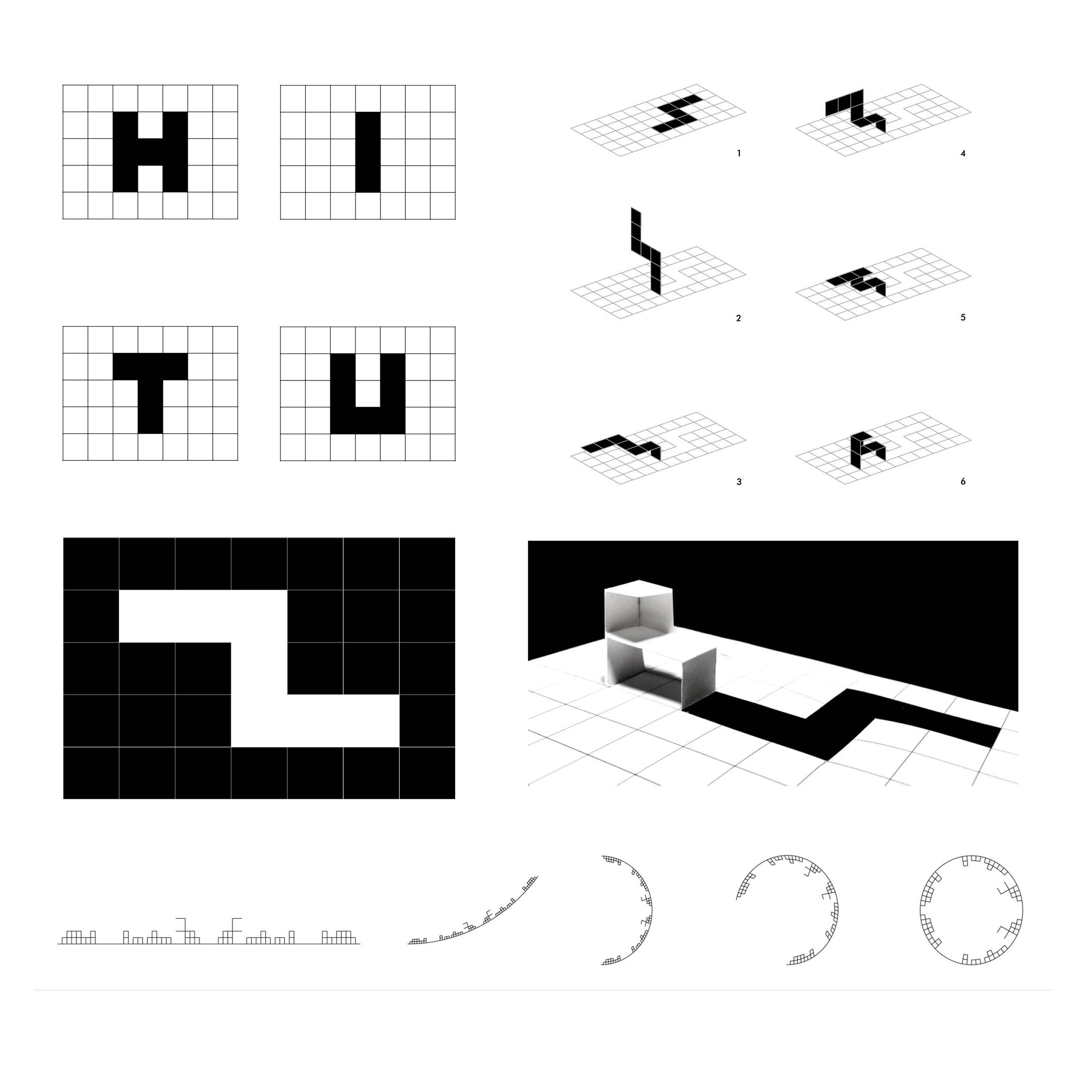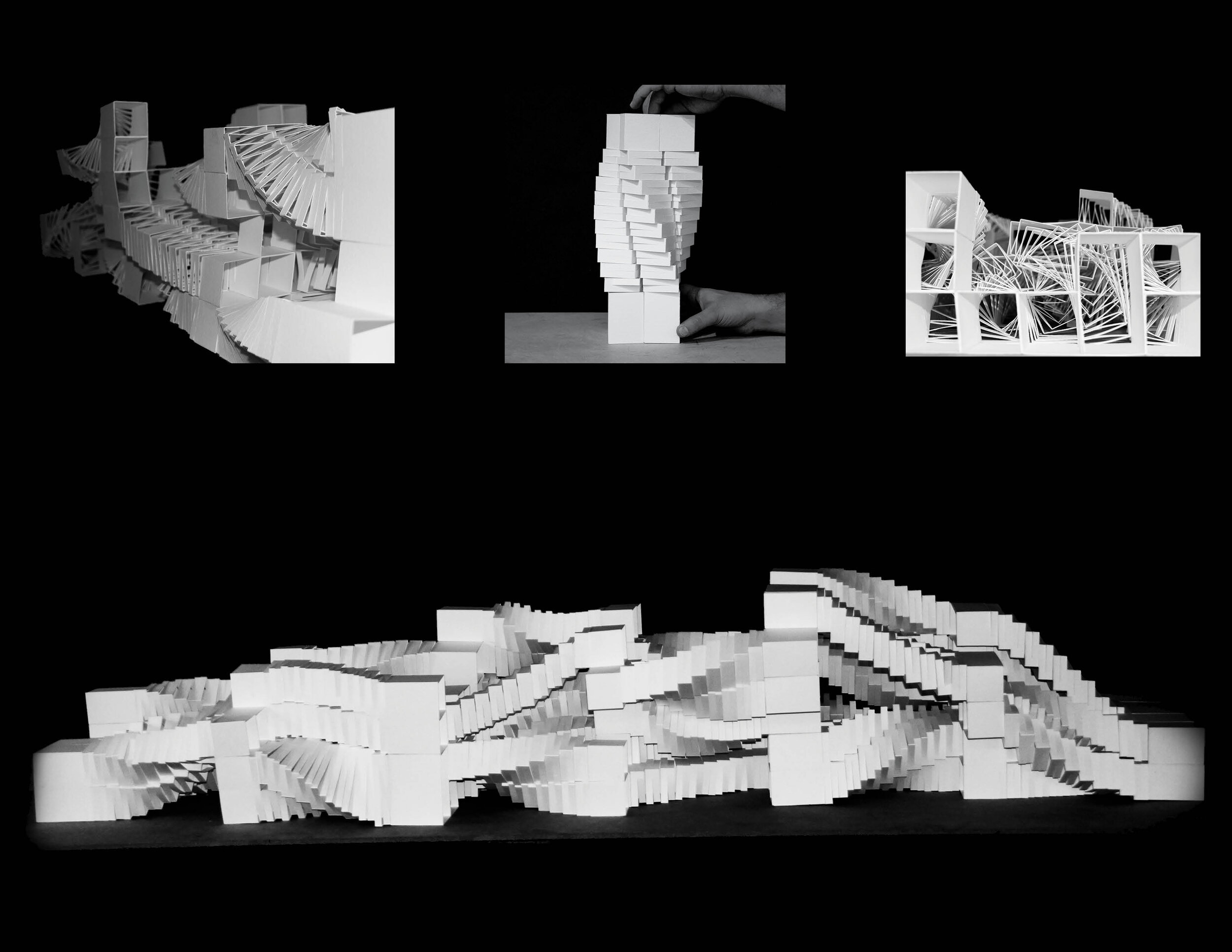Date: Spring 2017
Category: Computational Geometry
Location: Tehran, Iran
Tutor: Farshad Mehdizadeh
Undoable
Architecture is a discipline that forces mathematics to escape the theoretical realm and confront the tangible. With Islamic patterns – as a singular example of the integration of mathematics in design – the application in the world of craft, as ceramic tiles, results in the complex non-hierarchical superficial motives that ornament so many spaces of the Islamic world.
Cubic Hinge Project
By choosing Paper as the material and cut and fold as two Techniques, this project tried to change the behavior of paper. During this procedure, the cube was found as the desired volume as it was possible to be created by paper and has a considerable potential for both growths (joining with the same volume) and providing a variety of alternatives. Choosing specific materials and techniques led the group to be familiar with the Pop-up Technique.
«Traditionally, one-piece pop-ups are intricately cut and folded to create sculptures of great complexity. However< the intricacy of these constructions breaks the card into many small facets.»
Tunnel of Cells Project
Play with full and empty cells on paper give a new character to paper and create new behavior. Non-overlapping increased up cells from their own empty space.
After studying cell behavior The next issue was the growth of cells, which according to our law, cut cells Should not fill the empty space And overlap. And according to the law And add scale The cells were grown next to each other.
At the end By adding the bending technique To whole Plane cells, Added a new dimension To it.
So that nature has changed and evolution cells together are our problem in practice.
Twister Project
In this project, the only limit was the paper sheets as material. All techniques were tested in first prototypes to reach different geometries. During this process, the behavior of the paper as sheet material was studied. Eventually, the cut was selected as the main technique to create a cell with the ability to Rotate, Shift and Bend to change the axis. In this way, it gave us the probability of defining the growth patterns.






